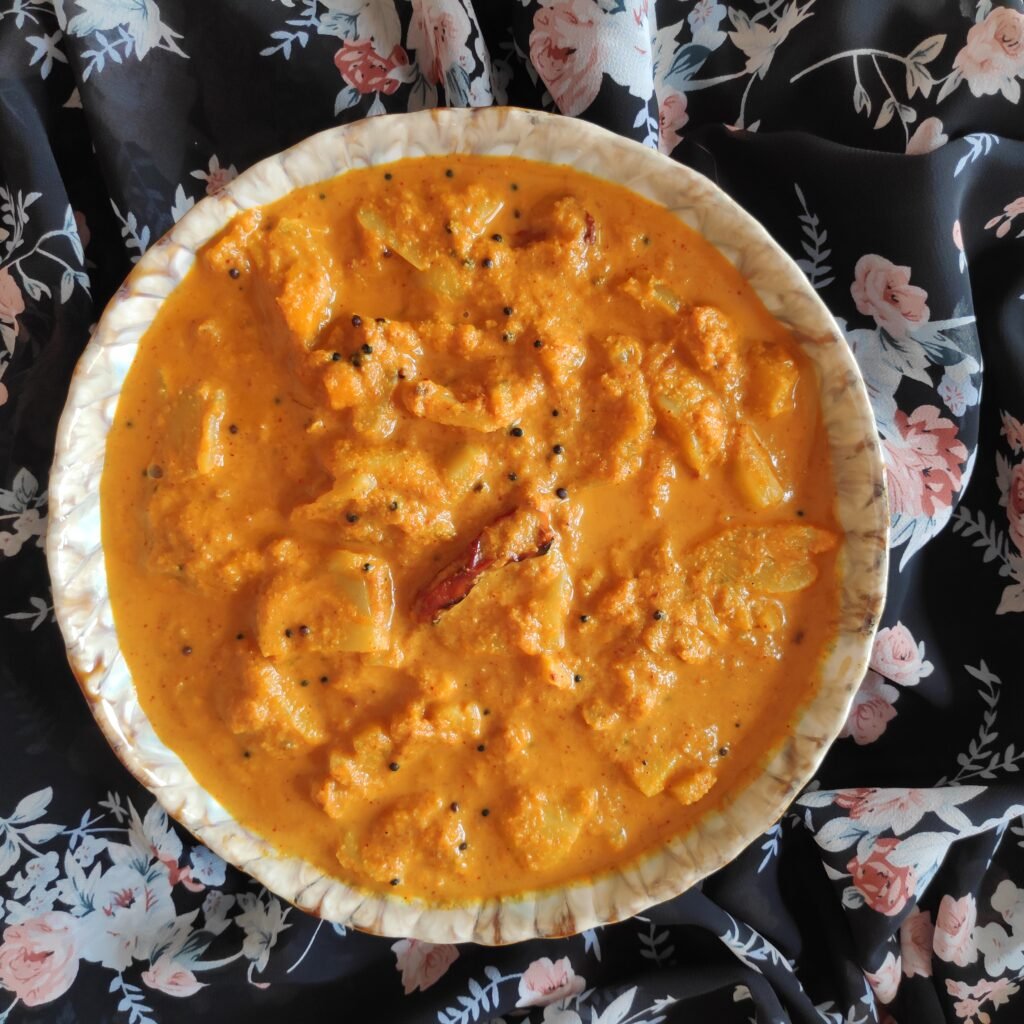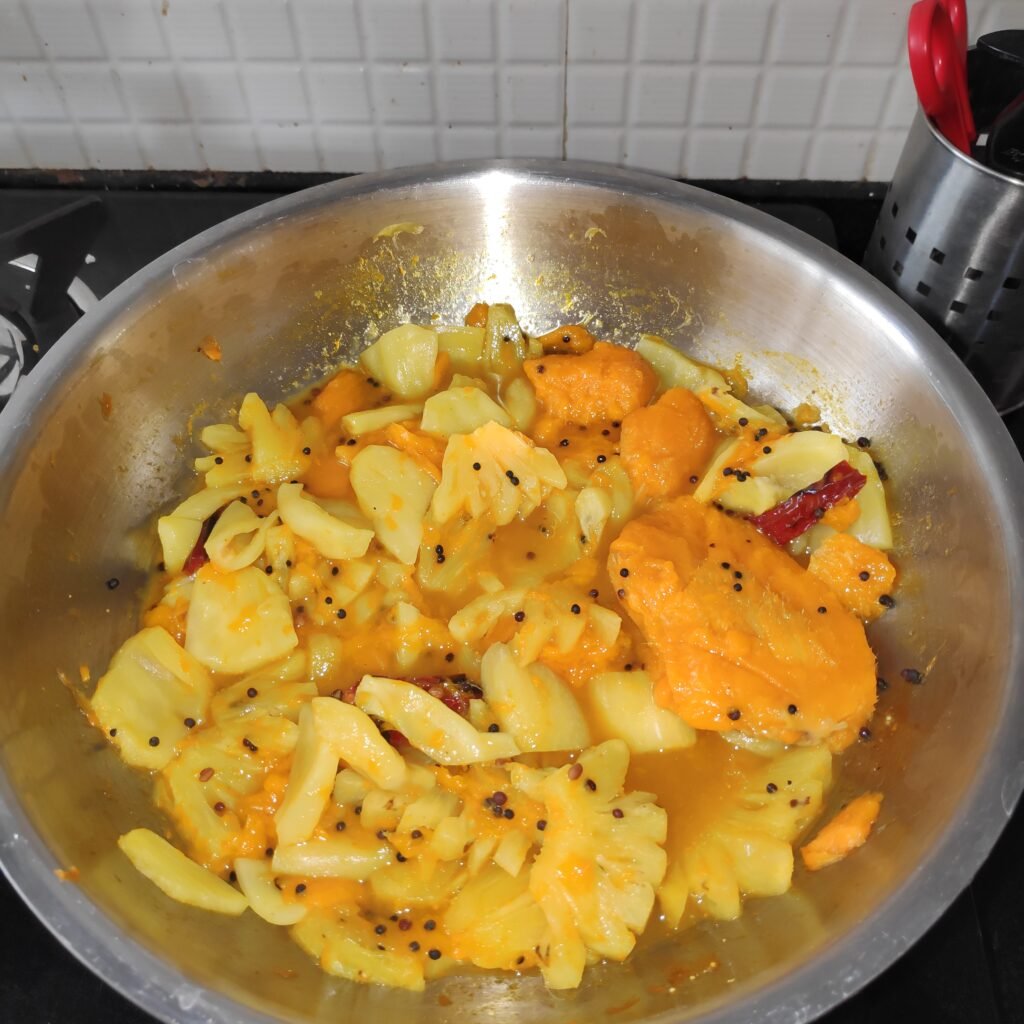Recipe: Darshana Muzumdar
Serves 4 as part of a traditional Indian meal
Ingredients
- 1 cup ripe jackfruit chopped into big pieces
- 1 cup pineapple chopped into big pieces
- 1 cup mango chopped into big pieces + the kernel with some mango flesh on it
- ½ cup or to taste jaggery (optional)
For the Masala
- 1½ cup fresh coconut, grated
- 2 tsp red chilli powder
- ½ tsp turmeric powder
- 5-6 pepper corns (optional)
- 1 marble sized ball of tamarind (optional)
For the Tempering
- 2 chillies
- 1 tsp mustard seeds
- ½ tsp asafoetida
- 1 tsp coconut oil
Method
Note: If the fruits are all sweet then use the tamarind while grinding the masala. If the pineapple and mango are sour then use the jaggery. Use the pepper corns in the masala if you would like more heat in the dish. The pepper corns also add to the flavour.
Immerse the grated fresh coconut and tamarind (if using) in very warm water. The water should just about cover it.
Heat the oil in a thick bottomed steel pot on medium heat. Add the mustard seeds and chillies and sauté till the mustard seeds splutter or pop. Add the asafoetida and sauté for a few seconds more till it releases its flavor. Add the jackfruit and pineapple pieces and sauté for 10 seconds. Add the jaggery if using and the mango and half a cup of water. Mix well and cook covered for around 5-10 minutes depending on the ripeness of the fruit. The pieces should be soft and easy to bite.
While the fruit is cooking grind the masala. Put the soaked coconut, tamarind (if using), red chilli powder, turmeric powder and the pepper corns (if using) into a blender jar and grind coarsely. This masala is usually not made very fine.
Once the fruit is almost cooked, add the masala and salt and mix well. Allow it to simmer for a couple of minutes, adding half a cup more water as the coconut gravy will thicken in some time. Take care not to allow the gravy to boil as the coconut will split. Turn off the heat and serve with steamed rice. In the picture, Ansa Phansachi Bhaji has been served with some delicious black rice.
For the Whole-Food Plant-Based (WFPB) version:
Do not use oil. Put the fruit in a thick bottomed steel pot and add half a cup of water and the jaggery if using it. Heat an iron tempering ladle and add the mustard seeds. Once they splutter and pop, transfer them to the fruit. Add the red chillies to the tempering ladle next and sauté them till they are slightly puffed and light brown. Transfer these to the fruit. Turn the heat to low and add the asafoetida. Sauté it till it releases its aroma and transfer it to the fruit. Cook the fruit till almost done. Add the ground masala and water and simmer for a couple of minutes. Take care not to allow the gravy to boil as the coconut will split. Turn off the heat and serve with steamed rice.




Share this:
- Click to share on Facebook (Opens in new window)
- Click to share on WhatsApp (Opens in new window)
- Click to share on Twitter (Opens in new window)
- Click to share on Pinterest (Opens in new window)
- Click to share on LinkedIn (Opens in new window)
- Click to share on Reddit (Opens in new window)
- Click to share on Tumblr (Opens in new window)
- Click to share on Pocket (Opens in new window)
- Click to share on Telegram (Opens in new window)
- Click to print (Opens in new window)

